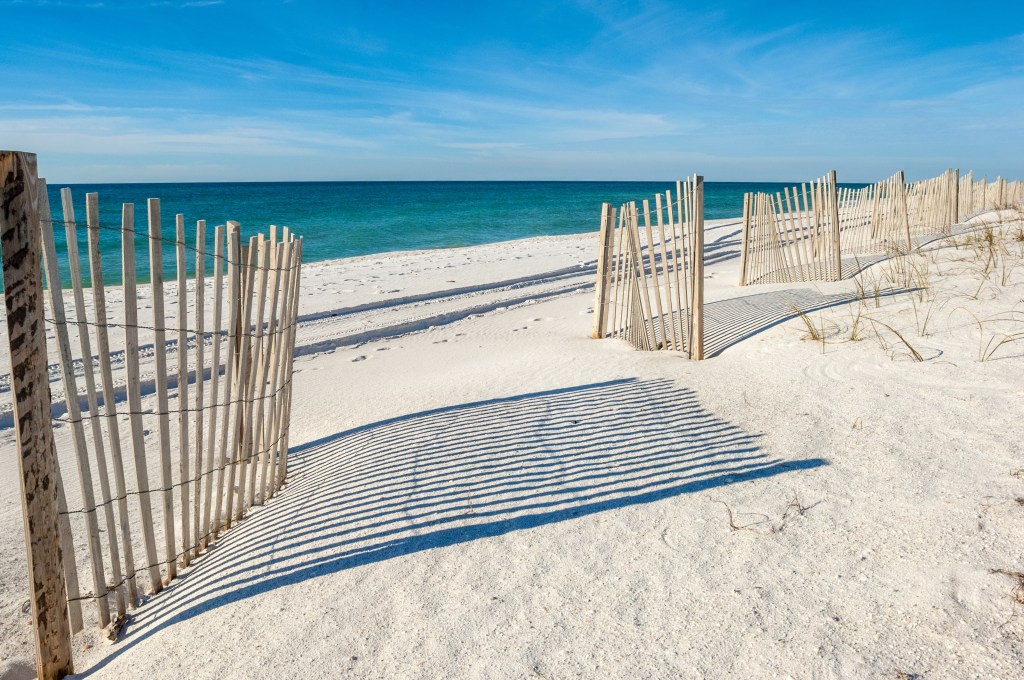
Enjoying the Gulf Coast beaches is one of the best parts of summer in Alabama. The beautiful shores promise plenty of fun in the sun, but they also pose some serious risks – especially for families with small children.
To help you make this a summer to remember for all the right reasons, we’ve put together 10 beach safety tips to keep in mind as you head to the coast.
1. Safeguard against sunburn: One of the easiest ways to protect yourself during beach season is to slather on some sunscreen. If possible, plan your beach visit before 10 a.m. or after 4 p.m. to avoid the sun’s most intense rays. At all times, wear a water-resistant sunscreen of at least 30 SPF, and reapply it after getting in the water. It’s also a good idea to cover your head with a hat and your eyes with sunglasses while on the beach.
2. Avoid digging sand traps: The temptation to dig a big hole in the sand and climb right in is tempting on hot days, but this has led to some tragedies. Large holes can quickly collapse without warning, trapping children and pets inside. They also pose safety risks to other beachgoers and lifeguards, who could trip and fall or even sprain an ankle by accidently stepping in a hole. This doesn’t mean you can’t build that epic, Instagram-worthy sandcastle – just fill in the holes when you’re done.
3. Know what to do in a rip current: Most beach rescues are prompted by rip currents, but not every beach has a lifeguard standing by ready to pull you to safety. Rip currents are ocean wave patterns that extend from the shore and past the wave break, and they can be dangerous if you don’t understand how to navigate them. If you feel yourself being pulled out to deeper water, don’t fight the current or swim against it. Instead, try to stay calm, swim parallel to the shore, and swim back to the beach at an angle.
4. Understand shore breaks: Shore breaks occur when waves break right on the shore rather than rolling gently onto the beach. They can be unpredictable and knock unsuspecting swimmers off their feet, potentially causing injury to the limbs, neck, and spine. Stay alert when you’re wading near the shoreline, and never turn your back to the incoming waves.
5. Always swim with a buddy: The buddy system is taught in schools as a way to stay safe and ensure that everyone is accounted for, and this is a great idea for beach trips, too. Swimming alone in the ocean is risky, regardless of your age or skill level.
6. Pay attention to beach warning flags: Many beaches have flags and posted signs to help keep you safe and informed about hazards, conditions, and rules. Pay attention to these signs, react to them, and ask a lifeguard if you have questions about what they mean.
7. Be prepared for jellyfish stings: All jellyfish have the capability to sting, though only some contain venom that can harm humans. But to be safe, avoid all jellyfish in the water, as well as those that have washed up on shore. The best way to treat a jellyfish sting is to rinse the affected area with vinegar, use tweezers to pluck out any visible tentacles, and soak the skin in hot (but not scalding) water for about 30 minutes.
8. Avoid alcohol: Alcohol dehydrates your body in the heat and sun, but it also clouds your judgment about many of the beach safety precautions mentioned here. Stick to pure water, juice, lemonade, and iced tea as much as possible.
9. Look out for lightning: Check the weather conditions before you head out to the beach, so that you can plan for what to wear and bring. Lightning is a sure sign that it’s time to leave the beach and go indoors. As soon as you hear the roar of thunder or see the first glimpse of a lightning strike, seek shelter in a nearby building or hard-topped vehicle.
10. Check water quality: Water quality can be affected by pollution from agricultural runoff, failed septic systems, high bacteria levels, and garbage that finds its way into the ocean. Look online for information about the water quality near the beach you visit, or call the local park or beach office for advice. Lifeguards and beach resort personnel also may be able to suggest the safest places to swim.
